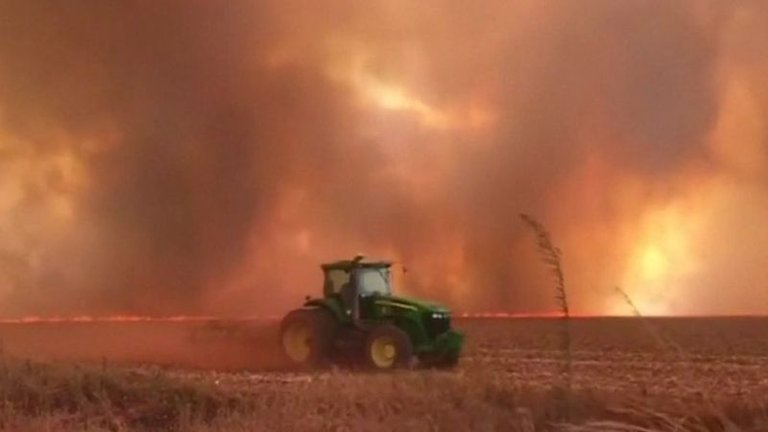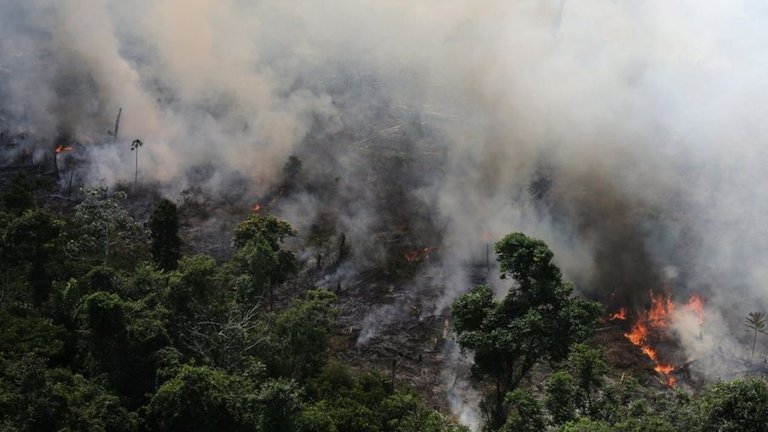
The heart of South America burns at a record pace.
The forest fires that Brazil suffers in 2019 are unprecedented since in 2013 it began monitoring them from space. And the fire is also being news in countries like Bolivia or Paraguay.
Why on Monday it got dark in Sao Paulo two hours before nightfall
The National Institute of Space Research of Brazil (INPE, for its acronym in Portuguese) has registered this 2019 an increase of around 83% compared to the same period in 2018.
In Bolivia, the eastern region of Santa Cruz became the epicenter of a series of fires that consumed over 500,000 hectares of forest and grassland in more than three weeks.
The authorities of Santa Cruz, who over the weekend declared the situation of "departmental disaster", attribute the fire to the "chaqueos", the burning of vegetation to prepare farmland and grazing land by farmers.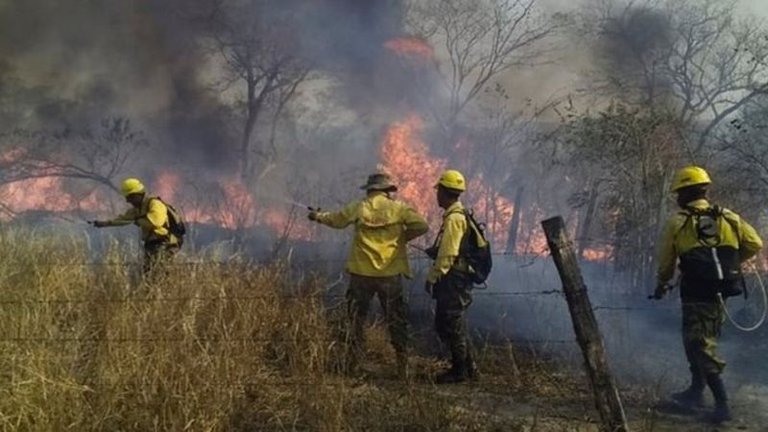
The fire declared during the weekend in the Paraguayan Pantanal, a wetland shared by both countries with Brazil, also arrived in Bolivia. The fire swept over 21,000 hectares.
In Peru, the National Institute of Civil Defense (Indeci) reported that in less than a month it had registered 98 forest fires in 18 regions of that country. Most of the accidents were caused by human action, according to Indeci.
However, NASA says that in 2019 the general fire activity in the Amazon basin is so far slightly below average.
The US space agency said that while activity had increased in the Brazilian states of Amazonas and Rondonia, it had decreased in the states of Mato Grosso and Pará.
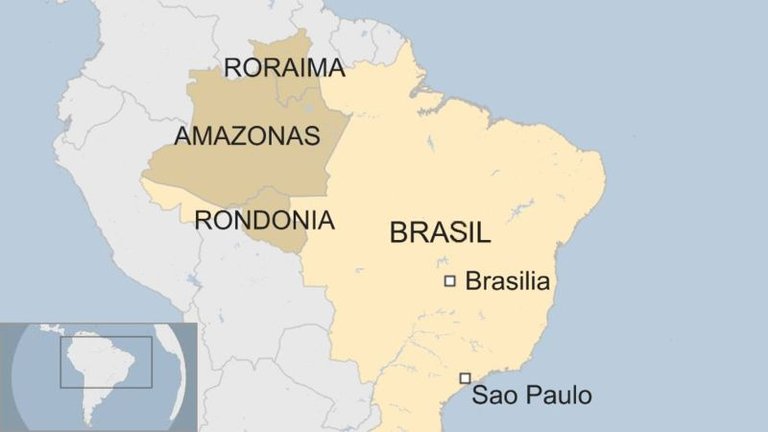
The world's largest rainforest, the Amazon, is a vital carbon reserve that slows the pace of global warming.
It also houses around three million species of plants and animals, and one million indigenous people.
Fires in the Brazilian Amazon
In Brazil, more than half of the fires (52.6%) have been recorded in the Amazon rainforest, according to INPE.
Conservationists blame President Jair Bolsonaro for the plight of the Amazon, saying he has encouraged loggers and farmers to burn the vegetation to "clear" the land.
Scientists say that the rainforest has suffered losses at an accelerated rate since taking office in January.
Forest fires often occur in the dry season in Brazil, but they can also be deliberately initiated in order to illegally deforest land for livestock.
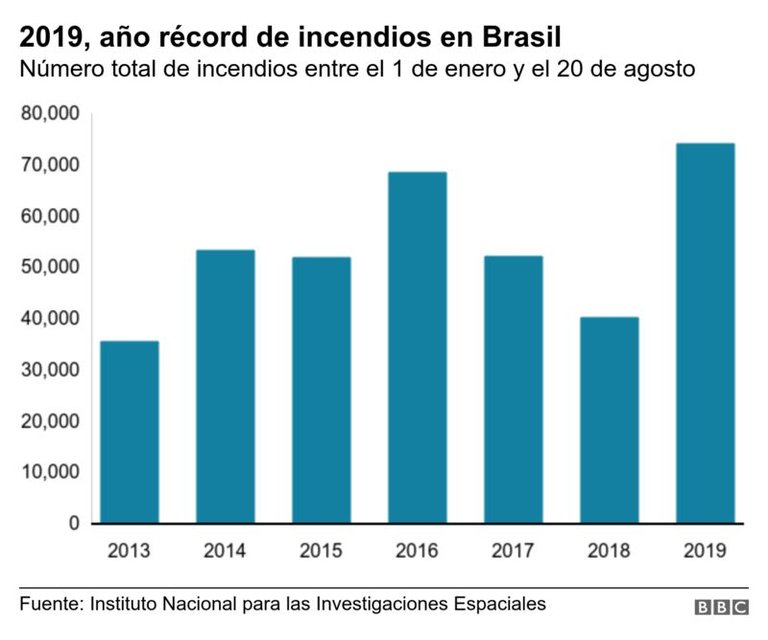
The INPE said it had detected more than 74,000 fires between January and August across the country, the highest number since records began in 2013.
This means that there have been about 40,000 more fires than in the same period of 2018.
Only since Thursday, INPE has observed more than 9,500 forest fires, said the agency, the majority in the Amazon region.
However, the second worst recent year in terms of forest fires was 2016, with more than 68,000 between January and August.
Why the deforestation of the Amazon has accelerated with the arrival of Bolsonaro to the presidency of Brazil
The satellite images show the state of Roraima, in northern Brazil, covered with dark smoke, while the neighboring state of Amazonas declared an emergency due to the fires.
On Monday, in the city of Sao Paulo it grew dark two hours earlier than expected because of the smoke from the fires in the Amazon.
But some meteorologists said the smoke came from large fires in Paraguay, which is much closer to the city, and not from the Amazon region.
Bolsonaro points to NGOs
The Brazilian president discarded the latest data and said it was the "season of the queimada", the period in which farmers open fire to clear their land.
"They used to call me Captain Chainsaw. Now I'm Nero, setting the Amazon on fire," he said, according to the Reuters news agency.
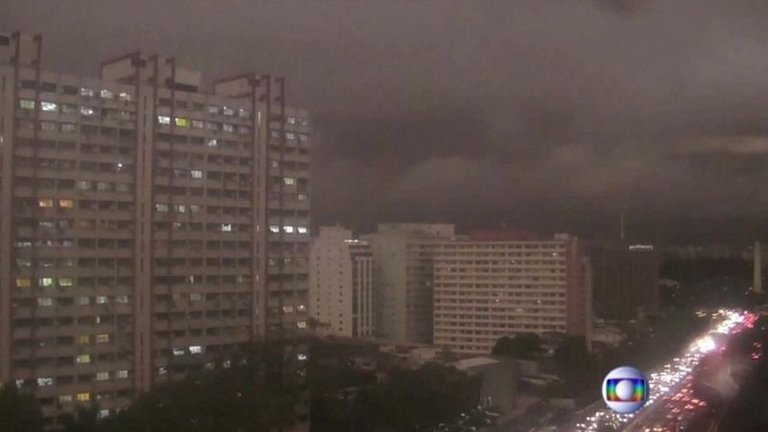
In addition, on Wednesday he suggested that activists could be behind the fires, as a revenge for the cut in funds that the government gave them.
He presented no evidence and gave no names to support this thesis, saying "there were no written records of the suspicions."
"There could be ... I am not affirming, criminal actions of these 'NGOs' to draw attention against me, against the government of Brazil. This is the war we are facing," he said on Facebook Live on Wednesday.
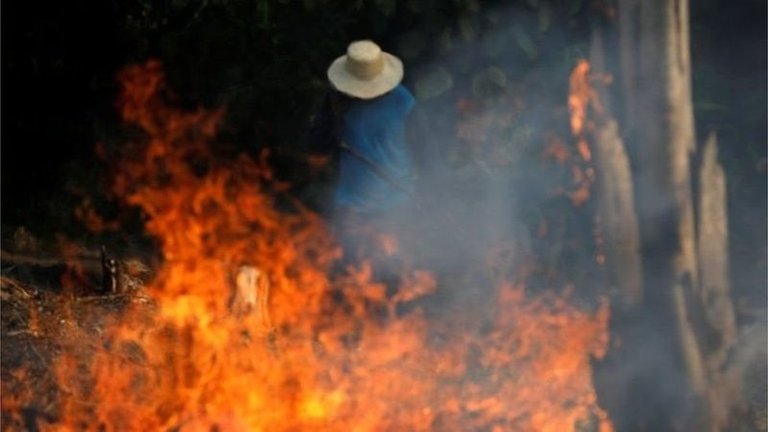
The Inpe noted that the number of fires was not in line with those normally reported during the dry season.
"There is nothing abnormal about the weather this year or the rain in the Amazon region, which is slightly below average," Alberto Setzer, an INPE researcher, told Reuters.
"The dry season creates favorable conditions for the spread of fire, but starting a fire is the job of humans, either deliberately or by accident," he added.
Ricardo Mello, head of the Amazon Program of the World Wide Fund for Nature (WWF), said the fires are "a consequence of the increase in deforestation seen in recent figures."
Why is Bolsonaro criticized?
Reports of the increase in forest fires come amid criticism of Bolsonaro's environmental policies.
Scientists say the Amazon has suffered losses at an accelerated pace since the president took office in January, with policies that favor development over conservation.
"It is the worst attack on the Amazon in almost half a century": the controversial opening to mining of a valuable nature reserve in Brazil
During the last decade, previous governments had managed to reduce deforestation with the action of federal agencies and a system of fines. But Bolsonaro and his ministers criticized the sanctions and oversaw the fall of timber confiscations and convictions for environmental crimes.
Preliminary Inpe figures for 2019 indicate that deforestation warnings in the Brazilian Amazon shot up 278% in July, compared to July 2018.
In July, the president accused the then director of INPE, Ricardo Galvao, of lying about the magnitude of deforestation in the Amazon and trying to undermine the government.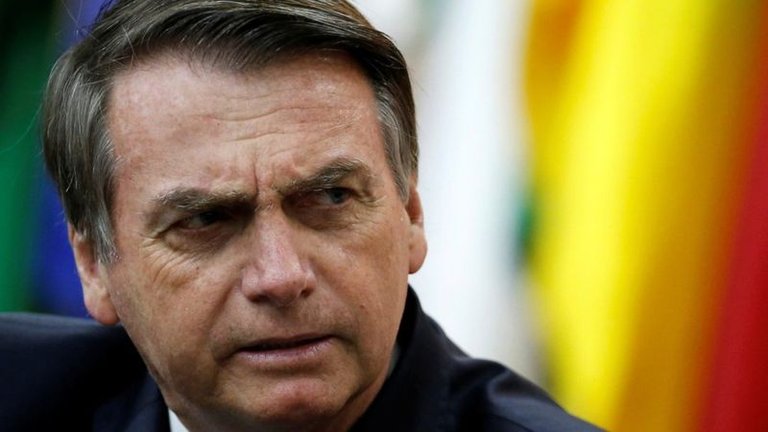
The friction occurred after INPE published data showing an 88% increase in deforestation there in June compared to the same month of 2018.
In early August, the institute's director announced that he had been fired.
INPE has previously insisted that its data is 95% accurate. The agency's reliability has also been defended by several scientific institutions, including the Brazilian Academy of Sciences.
